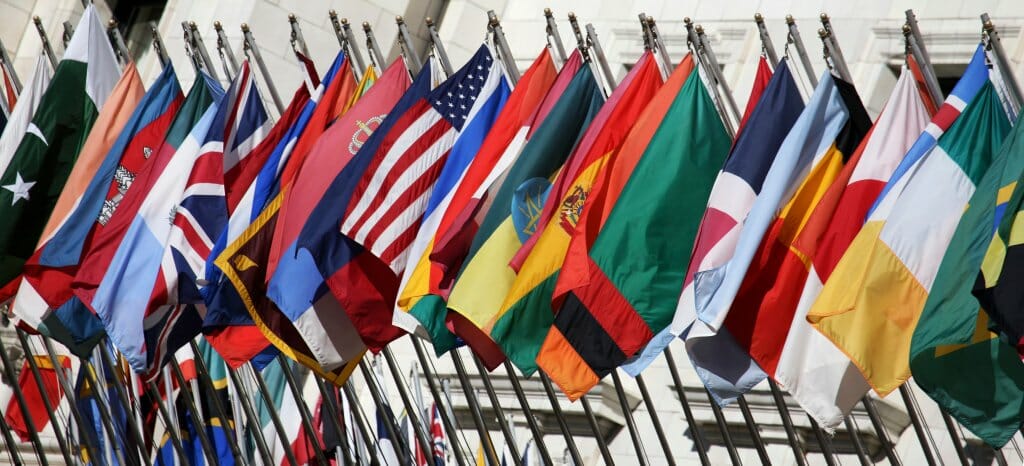This week in diplomatic and military history: March 2
Jordan Pahl | Mar 02, 2015
If religion is the opiate of the masses, then the hujum in 1920s Uzbekistan constituted the Soviet War on Drugs. In February 1927, women across the Uzbek Soviet Socialist Republic (Uzbekistan) participated in unveiling ceremonies, theatrically removing their veils and throwing them into massive bonfires. On March 8th, International Women’s Day, the Soviets launched their hujum (“attack”). Mass unveilings took place across the Republic, usually accompanied by music and speeches by politicians.
The Stalin-era Soviets saw local and Islamic traditions in the Central Asian republics as a fundamental threat to the advancement of Communist principles. Under Lenin, Muslims were largely left alone, allowed to retain their cultural and religious practices. However, under Stalin, the attitude changed. The authorities focused on integrating the further reaches of the empire into the social ideals of Moscow. The intentions behind the hujum were to liberate women, create better opportunities, and equalize the sexes. The outcome of the policies, however, could not have been more contrary.
The Soviets considered the Central Asian republics and their cultural identities “backwards,” and the veil provided a convenient symbol of female exclusion. The imagery of the veil dangerously simplified the cultural and religious context of the region, allowing Soviet propaganda to focus entirely on the perceived fact that all women in Central Asia were forced to cover their heads. This perception conflated complicated cultural, religious, and social traditions into a single image, against which the Soviets campaigned.
However, not all unveiled women were included and not all veiled excluded. Its functionality was confined almost exclusively to symbolism; the act of removing the veil was often more important than the lack of the veil, and men frequently unveiled their women and daughters simply to show allegiance to the Communist Party. The neighboring Turkmen Soviet Socialist Republic (Turkmenistan) was seen as more progressive simply because of its lack of veils.
These symbolic actions had real-life consequences. Scholars widely agree that Soviet designs to change sexual and family practices actually strengthened the hold of Islam in the region, and fostered animosity for anyone associated with the forced, foreign cultural revolution. Killings became culturally motivated, rather than class-motivated, as the Soviets claimed. Women were given the choice of wearing the veil outside the home and facing persecution from the Soviets or removing the veil and facing violence from anti-Communist fundamentalists. In the year following the hujum, approximately 270 Uzbek women were killed for unveiling. Uzbeks remember the hujum as the time when “Russians made our women go naked.”
Already facing the “Sovietization” of their culture, local populations saw the hujum as another attack by those who did not understand their traditions and lifestyles. The hujum was more than a rejection of religious principles; it constituted an attack on tradition, which was even more important to the Uzbek people than political Islam.
Bibliography
Edgar, Adrienne Lynn. “Emancipation of the Unveiled: Turkmen Women under Soviet Rule, 1924-29.” Russian Review 62, no. 1 (January 2003). Accessed February 7, 2015. http://www.jstor.org/stable/3664562?origin=JSTOR-pdf.
Kamp, Marianne. “Pilgrimage and Performance: Uzbek Women and the Imagining of Uzbekistan in the 1920s.” International Journal of Middle East Studies 34, no. 2 (2002): 263-78. Accessed February 7, 2015. http://www.jstor.org/stable/3879827?origin=JSTOR-pdf.
Kamp, Marianne R. “Three Lives of Saodat: Communist, Uzbek, Survivor.” The Oral History Review 28, no. 2 (2001): 21-58. Accessed February 7, 2015. http://www.jstor.org/stable/3675777?origin=JSTOR-pdf.
Khalid, Addeeb. “A Secular Islam: Nation, State, and Religion in Uzbekistan.” International Journal of Middle East Studies 35, no. 4 (November 2003): 573-98. Accessed February 7, 2015. http://www.jstor.org/stable/3879864?origin=JSTOR-pdf.
Pahl, Jordan. “Islam in Central Asia: A Religion and a Heritage.” Young Historian’s Conference 2012. Accessed February 7, 2015. http://archives.pdx.edu/ds/psu/7691.
Tolmacheva, Marina. “The Muslim Woman and Atheism in Soviet Central Asia.” Islamic Studies 33, no. 2/3 (1994): 183-201. Accessed February 7, 2015. http://www.jstor.org/stable/20840166?origin=JSTOR-pdf.




